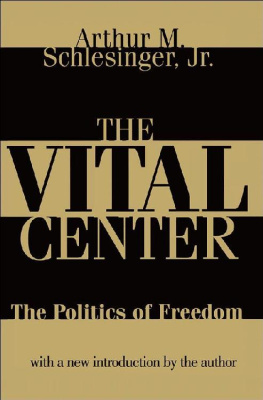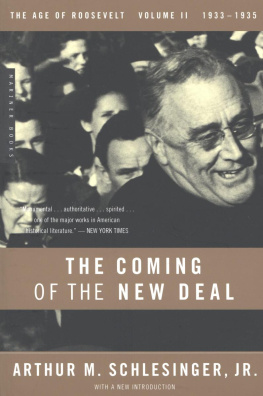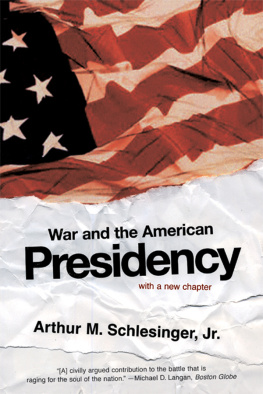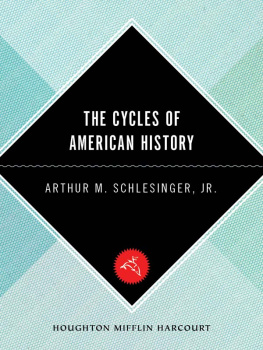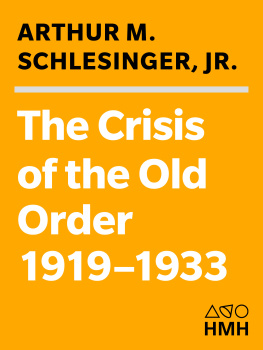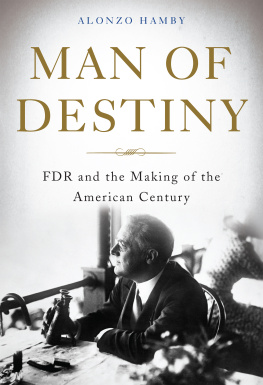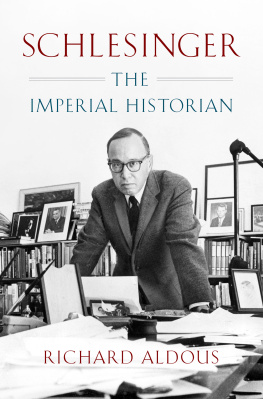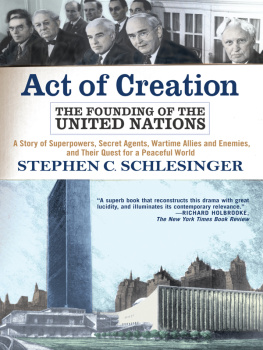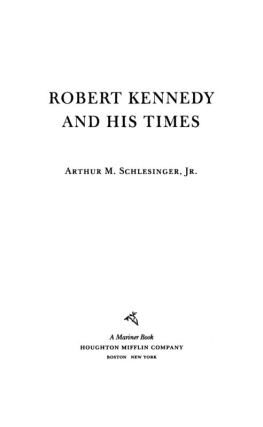First Mariner Books edition 2003
Copyright 1957 by Arthur M. Schlesinger, Jr.
Copyright renewed 1985 by Arthur M. Schlesinger, Jr.
Foreword to the Mariner Edition copyright 2002 by Arthur M. Schlesinger, Jr.
ALL RIGHTS RESERVED
For information about permission to reproduce selections from this book, write to or to Permissions, Houghton Mifflin Harcourt Publishing Company, 3 Park Avenue, 19th Floor, New York, New York 10016.
www.hmhco.com
The Library of Congress has cataloged the print edition as follows:
Schlesinger, Arthur Meier, 1917
The crisis of the old order, 19191933 / Arthur M. Schlesinger, Jr.1st Mariner Books ed.
p. cm.(The age of Roosevelt; v. 1)
A Mariner book.
Originally published : Boston : Houghton Mifflin, 1957.
With new foreword.
Includes bibliographical references and index.
ISBN 0-618-34085-8
1. United StatesHistory19191933. 2. Depressions1929United States. 3. Roosevelt, Franklin D. (Franklin Delano), 18821945. 4. United StatesPolitics and government19191933. 1. Title. E784.S36 2003 973.91dc21 2003047884
ISBN -10: 0-618-34085-8 (pbk.)
ISBN -13: 978-0-618-34085-9 (pbk.)
e ISBN 978-0-547-52763-5
v4.0716
The lines from The Waste Land are reprinted from T. S. Eliots Collected Poems, copyright 1936 by Harcourt, Brace and Company, Inc., by permission of the publishers, Harcourt, Brace and Company, Inc., and Faber and Faber, Ltd.; the lines from Invocation to the Social Muse are reprinted from Archibald MacLeishs Collected Poems, 19171952 by permission of the publisher, Houghton Mifflin Company, the lines from Margaret Larkins Ella Mays Songs are reprinted by permission of The Nation; the lines from Kenneth Patchens Before the Brave are reprinted by permission of the publisher, Random House, Inc.; and the lines from Robert E. Sherwoods Inaugural Parade are reprinted by permission of the Estate of the author and the Saturday Review.
For Reinhold Niebuhr
Foreword to the Mariner Edition
T HIS FIRST VOLUME OF The Age of Roosevelt appeared only a dozen years after Franklin D. Roosevelts death. The Crisis of the Old Order has therefore the advantage of the vividness born of immediacy. The author came of age during the Roosevelt years and interviewed people who had lived through the Great Depression and the Second World War, many of whom had known FDR, worked with him, fought against him, loved him, hated him. As Alexis de Tocqueville once observed, participants know better than posterity the movement of opinion, the popular inclination of their times, the vibrations of which they can still sense in their minds and hearts. (Posterity has compensating advantagesnew perspectives, knowledge of how things turned out, access to private papers and declassified documents, freedom from parti pris, the various illuminations of hindsight.)
The Crisis of the Old Order portrays the United States from the end of the Great War to the beginning of the Great Depression. The chief business of the American people, as President Calvin Coolidge famously said in 1925, is business, and the religion of business permeated and dominated the society. The man who builds a factory builds a temple, Coolidge continued... The man who works there worships there. Business leaders were revered as prophets of the new dispensation. Even Jesus Christ was drafted: Bruce Barton, the advertising man, praised the Son of God because He had picked up twelve men from the bottom of the ranks of business, and forged them into an organization that conquered the world.
The 1920s were complacent years for the cult of business, filled with moralizing and self-delusion. But for hereticsMencken, Sinclair Lewis, Fitzgerald, Dreiser, Hemingway, Frost, ONeillit was a glittering decade, artistically creative, filled with wit, satire, and tragic insight.
All this took place a long time ago. The 1920s were closer in years to the Civil War than to the twenty-first century. Yet some aspects, especially illusions about the economy, bear an eerie, chilling resemblance to our own recent times.
The 1920s hailed what came to be called the New Eraa permanent plateau of prosperity, an indestructible bull market, stocks rising giddily and destined to continue rising forever, ardess trust in the wisdom of business leadership. We in America, Herbert Hoover said when he ran for president in 1928, are nearer to the final triumph over poverty than ever before in the history of any land.... Given a chance to go forward with the policies of the last eight years, we shall soon with the help of God be in the sight of the day when poverty will be banished from this nation. The distinguished Yale economist Irving Fisher summed up the New Era in the autumn of 1929: Stock prices have reached what looks like a permanently high plateau.
The 1990s had equally touching faith in their own New Era, only now they called it the New Economy. Those were the days of the greatest bull market ever, of irrational exuberance, reckless speculation, boundless greed, cruel deception of investors and employees, consumption, gaudy living. Corporate executives paid themselves more in a day than they paid their workers in a year, and when they saw trouble ahead, they dumped their stocks before the market collapsed, casting employees and investors adrift in the cold, gray dawn of the morning after. Enron was supposed to be the next new thing, wrote Allen Sloan, a New Economy company with substance. The business scandals exposed in the first years of the twenty-first centuryEnron, Arthur Andersen, Tyco, WorldCom, Adelphia, et al.would have fitted perfectly into the excesses of the 1920s.
The memory of the financial mind, said John Kenneth Galbraith, whose The Great Crash is the classic account of the 1929 debacle, is about ten years. Every ten years a new generation of people come along who are believed to be and who assuredly believe themselves to be financial geniuses. The dynamics of speculation, of euphoric self-delusion, of market fundamentalism, of the deceptions wrought by greed, inevitably lead to the bursting of the financial bubble. If the bursting of the bubble was less catastrophic for the New Economy of the 1990s than for the New Era of the 1920s, if there was no crisis of a new order, it was for one simple reason: the Great Crash brought on the New Deal.
In 1929 the United States had no built-in economic stabilizers, no safety nets, no social security, no unemployment compensation, no bank-deposit insurance, no minimum wage, no farm price supports, no Securities and Exchange Commission.
Before the New Deal, the United States had experienced a severe depression every twenty years or so1819, 1837, 1857, 1873, 1893, 1907, 1929in the sixty years since the New Deal, there have been no major depressions. New Deal legislation changed the rules of the marketplace and installed a measure of public supervision of the economy.
How then to explain the savings-and-loan scandals of the 1980s and the Enron scandal of 2002? As Arthur Levitt, the former chairman of the SEC, told Congress, What has failed is nothing less than the system for overseeing our capital markets. And why has the system failed? Because regulatory commissions, even when they escape the mania for deregulation, are too often taken over by the businesses they are established to regulate.
Ironically, business leaders fiercely resisted the New Deal measures and policies designed to revitalize the economy and to protect the investor, the consumer, and the worker. The economic royalists, as FDR called them, lost, and even though the economy revived, the power and prestige of the old order did not recover for another half century. FDRs historic function was to rescue capitalism from the capitalists.


